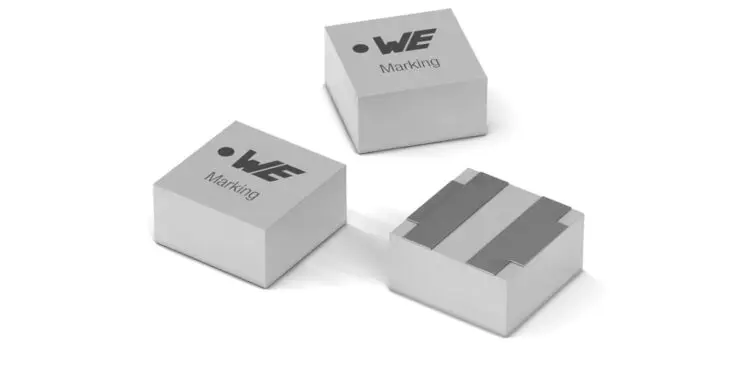WE-MAPI is one of the world’s smallest coiled metal-alloy power inductors. It is characterized by a high saturation current, high permeability, and low resistance.
The most important area of applications for the WE-MAPI range are high-performance DC/DC converters with a high efficiency for switching frequencies of up to 20 MHz. New additions to this range are the 5020 and 5030 sizes and the 4020HT version. This module is the new star of the series: with a range of operating temperatures from -55 to +150 °C, the WE-MAPI 4020HT is in a class of its own. What’s more, the power inductor also shows AC winding losses 55 per cent lower than those for comparable products on the market.
The other sizes of the AEC-Q 200-qualified power inductors too are perfectly suited for use in mobile devices – operating temperature -40 to +125 °C. All WE-MAPI versions also impress with a saturation current four times higher than that of similarly dimensioned components.
The recipe for the success of the WE-MAPI series is the innovative and high-quality finishing of the modules. The coil, made of enameled copper wire, is firmly embedded in a metal-powder alloy, the hybrid bonding system of which reduces the thermal ageing of the component.
WE-MAPI components are manufactured entirely without welding or soldering spots and hence do not have any potential weak points. Ni/Sn contact surfaces in the place of clips give the SMT pick-and-placeable power inductor perfect coplanarity and substantially reduce the space requirement.
The self-screening construction ensures the best possible EMC performance. A high current rating, low coil losses, low self-heating, and excellent temperature stability – Würth Elektronik has achieved all these advantages with its optimized design of the WE-MAPI inductors.
Applications
Thanks to the extremely reduced dimensions of the WE-MAPI components, they are ideally suited for use in high-efficiency power-supply systems and space-critical applications, for example power-supply units for operating panels and other mobile devices, DC/DC converters for high-current power supplies, DC/DC converters for field programmable gate arrays (FPGAs), or point-of-load (POL) converters.
The coils are also ideally suited for use on mainboards and graphics cards, for CPU/RAM power supplies, or in wireless communication devices. All 15 WE-MAPI module sizes are now available from stock, with no minimum order requirements. Würth Elektronik also offers free-of-charge samples and design kits with our restocking service.


































